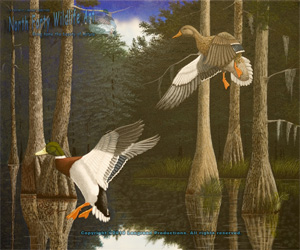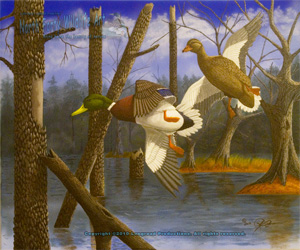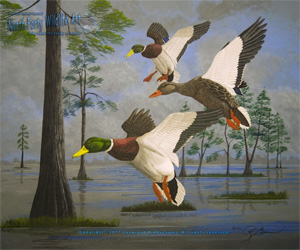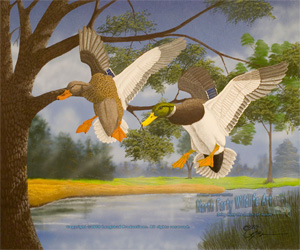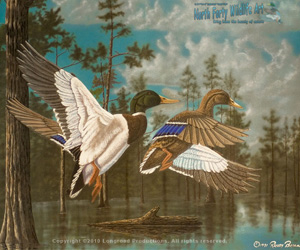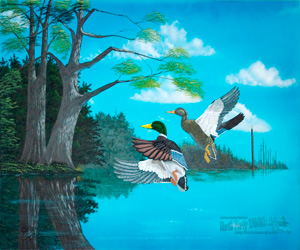Monthly Archives: November 2010
Creating a Sketch on Stretched Canvas
When painting on stretched canvas, it is very difficult to get an accurate sketch before the painting begins because of the stretch of the canvas itself. Here are a four tips to help eliminate some of the frustration of sketching on stretched canvas. Continue reading
How to Create Shadows in a Wildlife Painting
In order to create wildlife paintings with the realism that I desire, shadows must be accurately depicted in the scene using a technique that I refer to as shade mixing. Shadows create the shape of objects in the scene such as trees, rocks, Continue reading
Conclusion to How I Begin A Wildlife Painting
Art to me is more than just creating pictures. It is the journey from the design of the painting to that last brush stroke. Continue reading
Selecting the Materials for a Wildlife Painting
There are actually three materials that we have to decide on when creating a wildlife painting. These choices hold true for any type of painting but are especially important in wildlife art. Continue reading
Selecting the Color Scheme for a Wildlife Painting
The color scheme of the painting is largely determined by the three previous processes that I’ve used Continue reading
Selecting the Wildlife for a Wildlife Painting
In this article I will talk briefly about how I go about choosing what wildlife will appear in the new painting. Continue reading
Creating the Composition of a Wildlife Painting
The composition of a painting is the way in which the artist takes all the elements of a painting and puts them in an order of placement that is both natural and pleasing to the viewer. Continue reading
Mallard duck painting entitled “Safely Home”
On October 22 2010, I started a new painting entitled “Safely Home”. I completed the painting today Continue reading
Creating the Location for a Wildlife Painting
When I’m ready to start a new wildlife painting, I begin by thinking about the story I want to tell through the image. I think about the emotions that I want the image to portray. I decide the time of day the painting will represent and what the main character or characters will be. Continue reading
How I Begin A Wildlife Painting
Over the years, as a wildlife artist and waterfowl artist, I’ve had people ask how I begin a wildlife painting, so I decided to start this month out with an article about the process I use to begin a new wildlife painting. Continue reading



